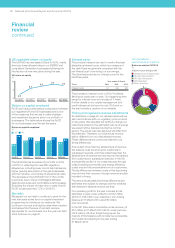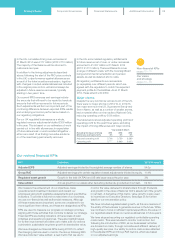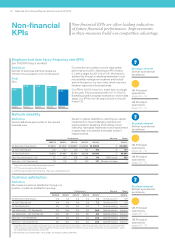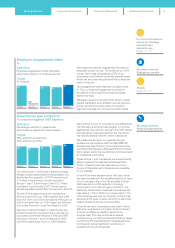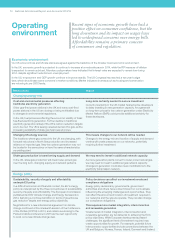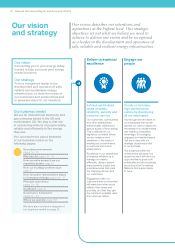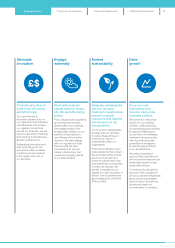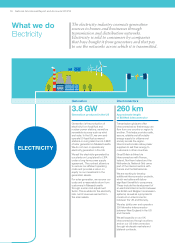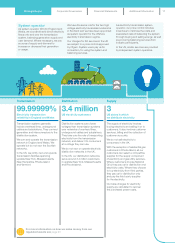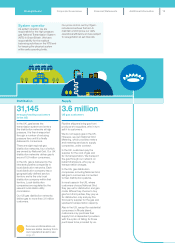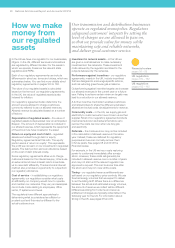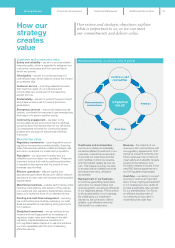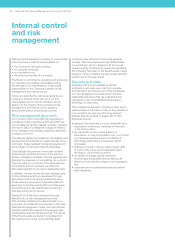National Grid 2014 Annual Report Download - page 20
Download and view the complete annual report
Please find page 20 of the 2014 National Grid annual report below. You can navigate through the pages in the report by either clicking on the pages listed below, or by using the keyword search tool below to find specific information within the annual report.
What we do
Gas
The gas industry connects producers, processors,
storage, transmission and distribution network
operators, as well assuppliers to industrial,
commercial anddomestic users.
7,66 0 km
of high pressure pipeline
in the UK
The transmission systems generally
include pipes, compressor stations
and storage facilities, including LNG
storage. They connect production
through terminals to the distribution
systems.
In the UK, gas enters the
transmission system through
importation and reception terminals
and interconnectors and may include
gas previously held in storage.
Compressor stations located along
the network play a vital role in
keeping large quantities of gas
flowing through the system,
particularly at times of high demand.
The gas transmission system has to
be kept constantly in balance, which
is achieved by buying, selling and
using stored gas. This means that,
under normal circumstances,
demand can be met.
We are the sole owner and operator
of gas transmission infrastructure in
Great Britain.
In the US, we hold a minority interest
in two interstate pipelines: Millennium
Pipeline Company and Iroquois Gas
Transmission System. Interstate
pipelines are regulated by the
Federal Energy Regulatory
Commission (FERC).
For more information on
how we make money from
our regulated assets see
page 20
9.7%
Approximate percentage of UK
gas from LNG imports
Gas used in the UK is mainly sourced
from gas fields in the North and Irish
seas, piped from Europe and
imported as LNG.
There are seven gas reception
terminals, three LNG importation
terminals and three interconnectors
connecting Great Britain via undersea
pipes with Ireland, Belgium and the
Netherlands. Importers bring LNG
from the Middle East, the Americas
and other places.
Gas used in the US is produced
mainly in North America. We import
LNG from a number of countries.
We do not produce gas in either the
UK or US.
In the UK, we own and operate Grain
LNG, an importation terminal and
storage facility at the Isle of Grain in
Kent, which charges customers
under long-term contracts for various
services. These include access to our
importation terminal, storage facilities
and capacity rights.
In the US, we own and operate LNG
storage and vaporisation facilities, as
well as an LNG storage facility in
Providence, Rhode Island, where we
store gas for third parties for a fee.
We also buy gas directly from
producers and LNG importers for
resale to our customers.
Production and importation Transmission
18 National Grid Annual Report and Accounts 2013/14


